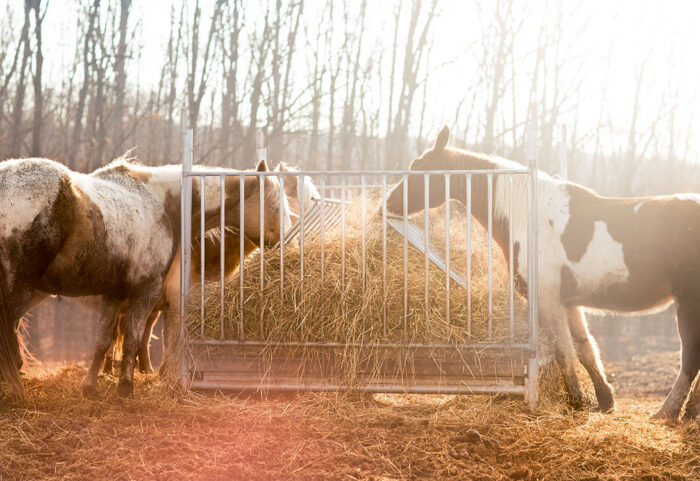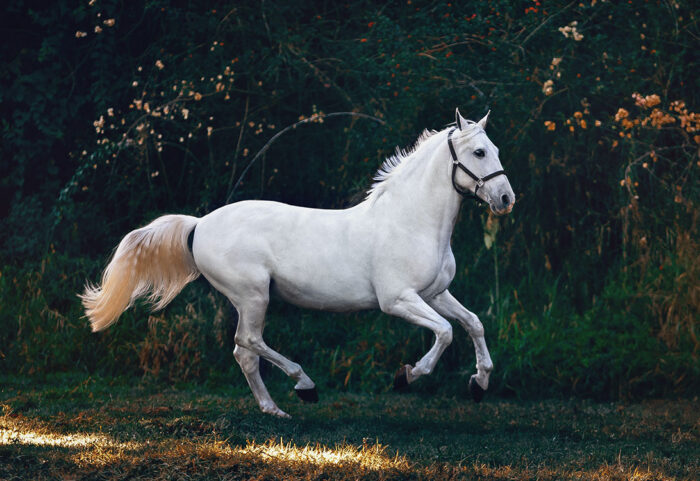When Is It Too Hot To Ride your Horse?

However, it can be difficult to determine whether or not it’s too hot to ride your horse on any particular day since there are so many factors that play into this decision.
Below, we’ll dive into everything you should take into consideration in order to keep your horse safe throughout the season.
Monitoring Heat Plus Humidity
When it comes to making sure your horse is safe while outside, your weather app is your best friend. A good guideline is to take the temperature in degrees Fahrenheit and add that to the humidity index for the day. Generally speaking, anything above 135 is too hot for your horse to be outside exercising for an extended period of time. For example, if it was 90 degrees outside and the humidity was at 50%, this would equate to 140 (90 + 50), meaning that your horse should stay inside for the day.
Consider Your Horse
You know your horse better than anyone else, so it’s a good idea to factor his individual limits into your decision making. For example, horses from a cooler region will take longer to acclimate to warm temperatures. Remember that horses that are overweight have a more difficult time regulating body temperatures.
You’ll need to be especially cautious with these horses for this reason, being careful to periodically check for signs of heat exhaustion. If you know that it’s going to be a warmer day, give your horse plenty of vital electrolytes and water before heading out on the trail.
Schedule Rides Strategically
During the hot summer months, it’s a good idea to schedule your rides during the mildest times of the day. This is usually early in the morning or after the sun goes down in the evening. You’ll want to avoid rides between 12-3pm and as always, defer to the humidity and heat index of your local area. If you need to go outside during the hotter times of the day, assuming it’s safe to do so, limit these sessions to moderate exercise to keep your horse feeling his best.
Modify Your Horse’s Exercise
You’ll want to modify your horse’s exercise schedule during the warmer months, since their bodies have to work harder during the hot season. If you have an indoor arena, limit your afternoon sessions to this section. After exercising, your horse needs access to plenty of shade, ventilation, and drinking water. For additional hydration, you can give your horse electrolytes and add water to his dry food. Keep summer sessions short and low intensity.
Keep An Eye Out For Signs Of Exhaustion
Heat exhaustion is an unfortunate possibility for all horses, especially anhidrotic horses. Signs of heat exhaustion include gum discoloration, abnormal vital signs, sticky sweat, weakness, high heart rate, staggered gait or lethargy. If your horse is exhibiting any of these signs, it’s important to call the veterinarian right away to determine the next best course of action.
While you’re doing this, remove your horse from the direct sun and provide plenty of fresh water and electrolytes. Temperature readings above 107 degrees can be deadly. If your horse’s temperature exceeds 102 degrees Fahrenheit, it’s best to retreat indoors.
When In Doubt, Stay Inside
If you’re ever doubting whether or not you should go on a ride due to heat, it’s best to stay inside with your four-legged friend. Make sure whenever you come inside your horse has access to shade and plenty of cool drinking water. Your horses’ quarters should also have working fans as these make it much easier for your horse to cool down quickly. Horses shouldn’t be transported in trailers during the warm months if at all possible.
Our horses depend on us to look out for their best interests, and staying out of extreme temperatures is no exception. Pay special attention to the weather reports and your horse throughout the warm season in order to keep your horse happy and healthy.


